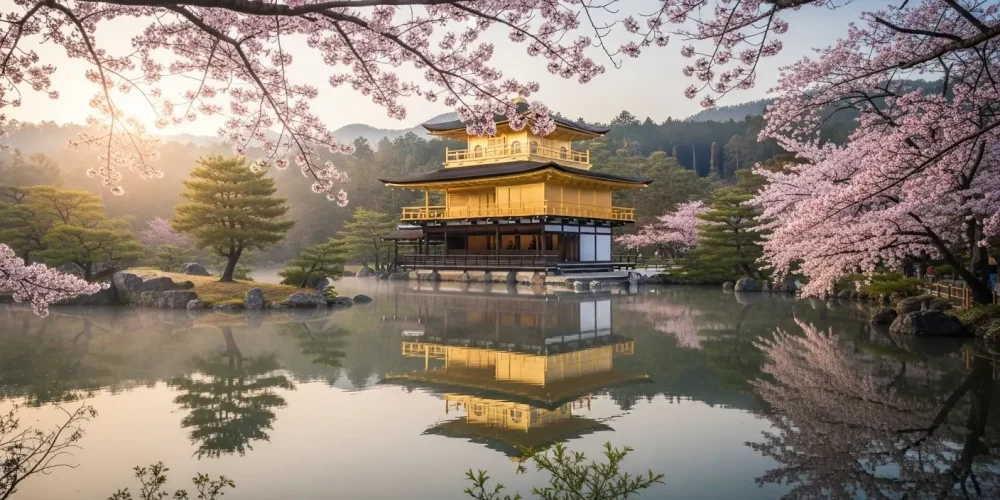Some cities make you feel alive with their energy — Kyoto makes you feel alive through its silence. It’s a place where ancient temples whisper stories of the past, where every narrow lane hides a secret garden, and where time seems to flow slower, softer, and more gracefully.
Once the capital of Japan for over a thousand years, Kyoto remains the spiritual heart of the country. It’s a city that balances modern life with deep tradition — where monks meditate behind temple walls while students rush to school, and where geishas still glide through the lantern-lit streets of Gion as they have for centuries.
To truly experience Kyoto, you have to walk. Every corner reveals something worth pausing for — a weathered shrine, a blooming cherry tree, the distant sound of bamboo swaying in the wind. The most famous of these paths is the Philosopher’s Walk, a stone pathway lined with cherry blossoms that runs alongside a narrow canal. Named after a Kyoto University philosopher who used to stroll here daily, it’s a place that encourages quiet thought and gentle wonder.
Then there’s Fushimi Inari Taisha, perhaps Kyoto’s most iconic sight — thousands of bright orange torii gates stretching endlessly up the mountain. As you walk beneath them, the world outside disappears. The air grows still, footsteps echo softly, and the light flickers through the gates like a heartbeat. It’s one of those rare places that feels sacred even without words.
Further north, the Arashiyama Bamboo Grove offers another kind of peace. Towering green stalks rise into the sky, creating a cathedral of light and shadow. When the wind moves, the bamboo creaks and rustles like an ancient language. Step out of the grove, and you’ll find yourself by the Katsura River, where wooden boats drift lazily under arched bridges — the scene looks more like a painting than real life.
For a glimpse of Kyoto’s elegance, visit Kinkaku-ji, the Golden Pavilion. Its gold-leaf exterior shimmers against the reflection of its lake, surrounded by perfectly raked gardens and pine trees. Every angle feels intentional, designed to bring calm to whoever stands before it.
Evenings in Kyoto unfold gently. The streets of Gion glow under the soft light of paper lanterns, and the air fills with the aroma of grilled yakitori and freshly brewed matcha. If you’re lucky, you might catch a fleeting glimpse of a geisha — graceful, quiet, and timeless — moving between teahouses.
But the real beauty of Kyoto lies not just in its temples or gardens, but in how it makes you feel. It teaches you to slow down, to notice small things: the sound of rain on old rooftops, the way incense drifts in temple halls, the moment when cherry petals fall into your tea.
Kyoto doesn’t ask to be rushed or conquered. It asks to be felt. To wander through its narrow alleys is to walk through living history — one where peace, art, and beauty coexist in perfect harmony.
And when you finally leave, Kyoto stays with you — like a soft echo of stillness in your heart.








